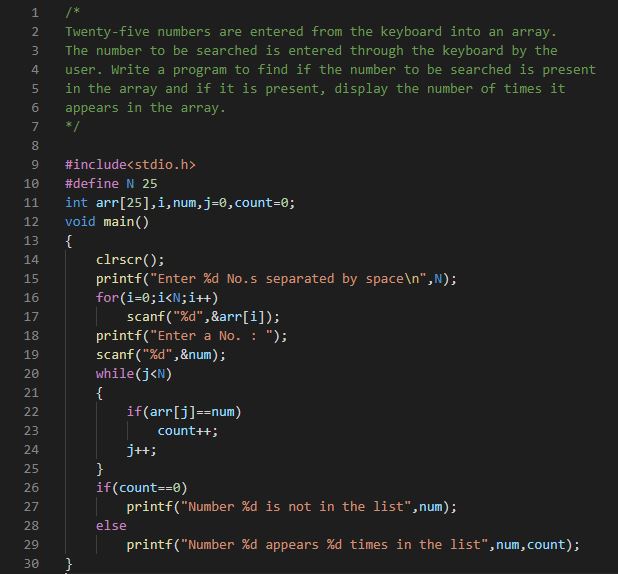Let Us C (Chapter 8 : Arrays) : Program-8

(h) Write a program which performs the following tasks: 1) initialize an integer array of 10 elements in main( ) 2) pass the entire array to a function modify( ) 3) in modify( ) multiply each element of array by 3 4) return the control to main( ) and print the new array elements in main() // Let Us C (Chapter 8 : Arrays) : Program-8 /* (h) Write a program which performs the following tasks: 1) initialize an integer array of 10 elements in main( ) 2) pass the entire array to a function modify( ) 3) in modify( ) multiply each element of array by 3 4) return the control to main( ) and print the new array elements in main() */ #include<stdio.h> void modify(unsigned int *); // Function declaration void main() { int i,j=1,Arr[10]; clrscr(); for(i=0;i<10;i++) { Arr[i]=j++; printf("%2d ",Arr[i]); } printf("\n"); modify(Arr); // Function call, passing array to function for(i=0;i<10;i++) printf(...






